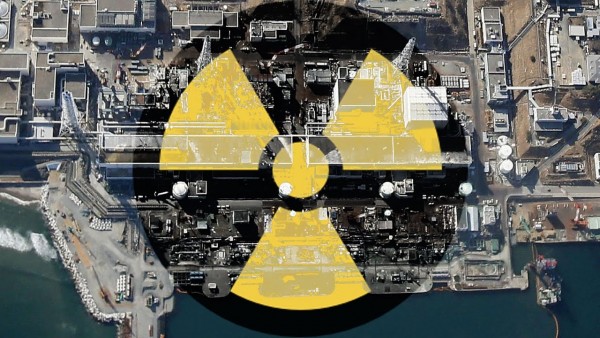Radioactive fish from Fukushima nuclear plant found on west coast of US
12/19/2016 / By David Gutierrez

In recent weeks, two new landmarks were crossed in the ongoing, inexorable spread of radioactive material from the 2011 Fukushima disaster toward North America’s west coast.
In November, researchers from the Fukushima InFORM project detected the radioactive isotope Cesium-134 (Cs-134) in Canadian salmon. Then on December 9, researchers from Woods Hole Oceanographic Institution detected Cs-134 in seawater samples taken at two beaches in Oregon.
Because Cs-134 has a half life of only two years, any occurrence of the isotope in the environment must have come from Fukushima.
In 2011, a major earthquake and tsunami triggered multiple meltdowns at Japan’s Fukushima Daiichi nuclear power plant. Massive quantities of radioactive material spilled into the ocean, while further material ejected into the air also eventually found its way to sea. Since then, researchers have been tracking the progress of this “radioactive plume” as it is carried toward North America by ocean currents.
Plume still spreading
Chemical oceanographer Ken Buesseler of Woods Hole has been one of the primary scientists tracking the plume, by means of the crowd-funded, citizen science seawater sampling project Our Radioactive Ocean.
The radioactive samples were collected from Tillamook Bay and Gold Beach in Oregon in January and February 2016. Sampling had previously shown the North American arrival of the plume in the form of Cs-134 in seawater collected from Vancouver Island, B.C.
The Fukushima InFORM project, which detected the radioactive salmon, is a partnership of various academic, government and nonprofit organizations, including Woods Hole, to assess the radiological risks to Canada’s oceans from the Fukushima disaster. The radioactive sockeye salmon was collected from Okanagan Lake in the summer of 2015.
The seawater also contained higher-than-background levels of Cs-137, another isotope that only occurs as a result of the nuclear industry. Because of nuclear testing in the 1950s and 1960s, however, levels of Cs-137 – which has a half-life of 30 years – still persist in the oceans. Levels higher than the background level leftover from these tests are likely due to Fukushima.
Scientists expect to rely more on Cs-137 for tracking Fukushima’s fallout as the years go on. Five years after the disaster, Cs-134 is already becoming increasingly hard to detect.
According to a recent analysis of Buesseler’s data by Fukushima InFORM, concentrations of Cs-137 in the central northeast Pacific have steadily increased since 2011.
“It appears that the plume has spread throughout this vast area from Alaska to California,” the researchers wrote.
Worse to come
Scientists say that the radioactivity levels detected do not currently pose risks to health or the environment. The levels of Cs-134 in the seawater were only 0.3 becquerels per cubic meter, while those in the salmon were more than a thousand times lower than those set as a health concern by Health Canada.
These levels are expected to keep increasing, however, as the bulk of the Fukushima plume has yet to reach North America.
“As the contamination plume progresses towards our coast we expect levels closer to shore to increase over the coming year,” said Jay Cullen, who leads Fukushima InFORM.
Data show that the plume is moving toward North America at about twice the speed of a garden snail.
Buesseler does not believe that radioactivity will ever reach dangerous levels at any one spot along the North American coast – unless Fukushima suffers from another disaster. In that case, the information on ocean currents being collected by Our Radioactive Ocean might prove invaluable.
The Fukushima Daiichi plant still contains more than a thousand giant tanks filled with radioactive water, while the failed reactors still contain hundreds of tons of molten fuel. In the worst-case scenario, the fuel would melt through its containment vessels and into the ground, uncontrollably irradiating groundwater that flows into the ocean.
“That’s the type of thing where people are still concerned, as am I, about what could happen,” Buesseler said.
Decommissioning and cleaning up the Fukushima plant is expected to take decades. A government panel recently doubled the cost projections for the project to $190 billion.
Sources for this article include:
Submit a correction >>
Tagged Under:
Fukushima, radioactive
This article may contain statements that reflect the opinion of the author
RECENT NEWS & ARTICLES
COPYRIGHT © 2017 FUKUSHIMAWATCH.COM
All content posted on this site is protected under Free Speech. FukushimaWatch.com is not responsible for content written by contributing authors. The information on this site is provided for educational and entertainment purposes only. It is not intended as a substitute for professional advice of any kind. FukushimaWatch.com assumes no responsibility for the use or misuse of this material. All trademarks, registered trademarks and service marks mentioned on this site are the property of their respective owners.




















